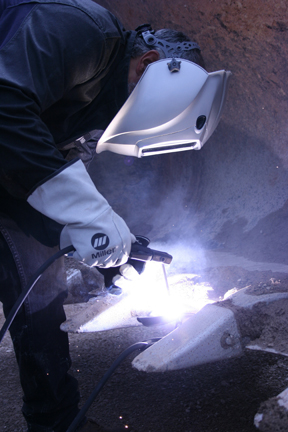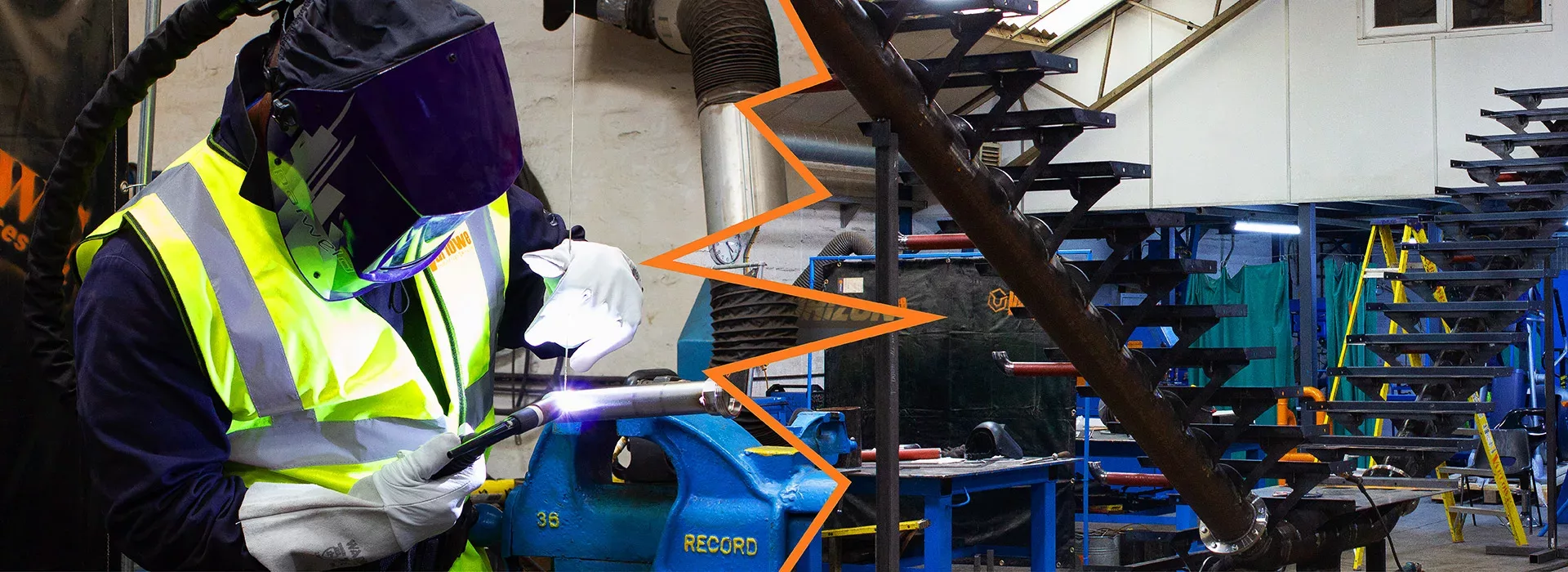All Concerning Welding: Secret Insights Into Techniques and Finest Practices for Success
Welding includes a range of methods, each matched for specific materials and applications. Recognizing these techniques, such as GMAW, SMAW, and TIG, is crucial for achieving suitable results. Moreover, the ideal equipment and safety techniques can not be forgotten. As prep work and repairing play vital duties in the welding procedure, mastering these components can significantly enhance the high quality of the last product. What are the essential aspects that guarantee an effective weld?
Comprehending Different Welding Strategies
Welding methods include a selection of techniques, each suited to particular applications and materials. Among one of the most usual strategies are Gas Steel Arc Welding (GMAW), Shielded Metal Arc Welding (SMAW), and Tungsten Inert Gas Welding (TIG) GMAW, likewise called MIG welding, is prominent for its speed and adaptability, making it optimal for thin products. SMAW, or stick welding, is favored for its simpleness and performance in outdoor atmospheres, particularly with thicker steels. TIG welding offers precision and control, making it appropriate for complex work and non-ferrous metals (Belgrade Welding). Each method has its distinct benefits and factors to consider, permitting welders to select the very best approach based upon the project's needs, material type, and wanted end results. Recognizing these techniques is essential for successful welding
Essential Welding Equipment and Devices
While numerous welding strategies need specific abilities, the best devices and devices are equally vital for achieving top quality outcomes. Necessary welding equipment consists of welding machines, which vary relying on the method-- such as MIG, TIG, or stick welding. Safety equipment, including handwear covers, aprons, and safety helmets, guarantees security and comfort throughout the process. In addition, components and clamps aid protect materials in place, ensuring precision in welds. Consumables like welding poles, cable, and shielding gas are additionally crucial elements that influence the quality of the weld. Devices such as cutters and grinders assist in surface area preparation and post-weld completing, contributing to a professional end result. Purchasing top quality devices eventually boosts the efficiency and performance of welding projects.
Safety And Security Practices in Welding
Proper security practices are vital in the welding sector to protect workers from potential dangers. Welders must wear suitable individual safety equipment (PPE), consisting of headgears with appropriate shading, gloves, and flame-resistant apparel. Adequate air flow is important to decrease direct exposure to hazardous fumes and gases produced during the welding procedure. Additionally, workers should be learnt the right handling of welding devices to protect against crashes. Fire precaution, such as keeping flammable products away from the welding area and having fire extinguishers readily available, are essential. Routine evaluations of tools and workspaces can help recognize potential risks before they result in mishaps. By adhering to these safety techniques, welders can produce a more secure working setting and lessen dangers connected with their profession.
Preparing Products for Welding
Preparing materials for welding is a vital step that substantially influences the high quality and stability of the end product (Belgrade). Proper preparation includes cleansing the surface areas to eliminate contaminants such as dust, oil, and corrosion, which can endanger the weld. Techniques such as grinding, fining sand, or utilizing solvents are generally employed to achieve a tidy surface area. Furthermore, ensuring that the materials fit together snugly is necessary; gaps can bring about weak welds. It's additionally vital to take into consideration the positioning and positioning of the components, as this will certainly affect the simplicity of welding and the final end result. Selecting the appropriate filler product and making certain compatibility with the base metals is crucial for accomplishing solid, long lasting welds.
Tips for Achieving High-Quality Welds
Accomplishing high-grade welds needs interest to detail and adherence to best techniques throughout the welding process. Proper joint prep work is necessary, making certain surface areas are clean and free from pollutants. Choosing the proper filler material and welding method based upon the base steels is important for ideal bonding. Maintaining consistent travel speed and angle while welding can protect against problems and promote uniformity. Additionally, managing heat input is vital; extreme heat can cause bending and weakened joints. Regularly checking the welds during the process permits immediate changes if necessary. Utilizing ideal post-weld treatments, such as cleansing and stress and anxiety alleviation, can enhance the longevity and honesty of the weld, eventually making sure a successful result.
Fixing Typical Welding Issues
Welding frequently provides obstacles that can influence the top quality and integrity of the end product. Usual concerns such as porosity, inconsistent weld grains, and getting too hot can arise, each needing particular troubleshooting methods. Understanding these troubles is vital for welders to improve their abilities and accomplish perfect outcomes.
Porosity Problems Explained
Although porosity can often be forgotten, it remains a vital concern in welding that can endanger the stability of an ended up item. Porosity refers to the visibility of small gas pockets within the weld bead, which can lead and damage the joint to early failing. This problem usually emerges from pollutants, dampness, or improper protecting gas coverage during the welding process. To mitigate porosity, welders must confirm that the base products are completely dry and clean, use appropriate securing gases, and keep constant welding criteria. Consistently examining the tools and setting can also assist recognize potential problems prior to they materialize in the weld. Dealing with porosity successfully is essential for achieving strong, long lasting welds that satisfy top quality Visit This Link standards.

Inconsistent Weld Beans
Irregular weld beads can greatly impact the quality and strength of a finished item. Different elements add to this concern, including improper traveling speed, incorrect amperage setups, and inconsistent electrode angles. When the welder relocates as well swiftly, a bead might appear slim and lack infiltration, while relocating too gradually can trigger excessive build-up. Furthermore, using the incorrect amperage can lead to either undercutting or too much spatter, both of which compromise weld honesty. The welder's method, such as inconsistent torch movement, can likewise cause uneven grain appearance. To minimize these problems, welders need to focus on keeping consistent, regulated motions and making sure proper devices settings to accomplish uniformity in their welds. Uniformity is key to accomplishing reliable and strong welds.
Getting Too Hot and Warping Issues
Too much warm throughout the welding process can cause significant getting too hot and deforming concerns, impacting the architectural stability of the work surface. These issues frequently materialize as distortion, which can endanger alignment and fit-up, making more assembly testing. Variables contributing to overheating consist of the choice of welding criteria, such as voltage helpful resources and travel speed, along with the kind of product being welded. To reduce these problems, welders need to maintain consistent travel speed and proper warmth input while keeping an eye on the work surface temperature. In addition, pre-heating or post-weld warmth therapy can help minimize anxieties brought on by fast cooling - Belgrade Fabrication. Normal evaluation and adherence to best methods are crucial in avoiding getting too hot and ensuring the durability and integrity of bonded structures
Frequently Asked Concerns
What Are the Occupation Opportunities in the Welding Sector?
The welding sector supplies varied job possibilities, consisting of settings as welders, assessors, engineers, and educators. Professionals can function in manufacturing, building and construction, aerospace, and automotive industries, gaining from solid demand and affordable wages in numerous functions.
Just How Can I Enhance My Welding Speed Without Compromising Quality?
To boost welding speed without giving up high quality, one must practice efficient techniques, keep tools, optimize settings, and enhance hand-eye control. Normal training and seeking comments can additionally considerably add to accomplishing quicker, high-grade welds.
What Certifications Are Readily Available for Welders?
Numerous qualifications exist for welders, including those from the American Welding Society (AWS), the National Center for Building And Construction Education and Research (NCCER), and numerous industry-specific organizations. These credentials boost employability and demonstrate skill effectiveness.
Just How Does Welding Impact the Residences of Metals?
Welding affects the properties of metals by altering their microstructure, which can bring about changes in ductility, hardness, and stamina. Warmth input and air conditioning rates during the process substantially affect these material he said attributes.
Can I Bonded Dissimilar Metals With Each Other?
